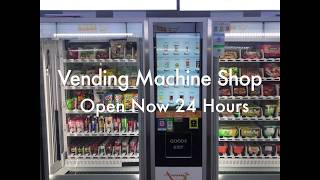They say that Rome was not built in a day, and for good reason. Cities are the most complex man-made system on Earth. Currently, 55% of the world’s population lives in cities and by 2050, 68% of the population is expected to live in cities. In the US, this has reached 83% and will increase to 89% by 2050.
Cities are therefore perhaps the most important opportunity for innovation and digital transformation for all of our societies and planet. Through this transformation, we can create an urban future that is sustainable, sustainable, but also adaptive. In this article, we understand why the smart city concept is necessary but not enough, and the three steps to realizing the adaptive city of the future – one for all.
Why smart city is not enough
Although the smart city concept has long been a vision for the future of cities, it has not been enough. The tech company has long pioneered the concept of smart sensors that collect billions of data points in real time to help cities become smarter and more responsive to their environment. Use cases include self-driving cars, smart lights, and even smart trash cans. Sensors and data are the building blocks of cement, air, water, sand and gravel, and used in concrete, they are raw materials, not final solutions.
Why adaptive cities are the future
The smart city concept is a good start, but the city of the future needs to take more important steps. It must be an adaptive city, able to respond flexibly to constant change and disruption.
In recent years, all kinds of diseases have become common. Today, technological disruptions such as 3D printing, artificial intelligence (AI), machine learning (ML), autonomous vehicles and digital twins, as well as business disruptions such as pandemics, extreme weather events, climate change and other unforeseen circumstances. . even in the form of capricious government policies.
The smart city concept has proven itself in a stable environment, but in a world of constant disruption, the key requirement for cities is to be able to respond to change and be able to respond with intrinsic agility in the digital and physical aspects of the operating model. As long as a city’s physical infrastructure is fragile, the nimbleness of the digital ecosystem is useless.
Adaptive cities balance livability, stability and sustainability, and all political, economic, social, technological, legal and environmental conditions always require analysis and interpretation. decide.
Three steps to making an adaptive city
The road to becoming a sustainable city is still long. Like digital transformation, it moves quickly, so benefits can be realized at every step. The three important steps to take are creating a vision, planning for adaptation, and building innate agility.
1. Develop a vision for an adaptive city
Visualizing an adaptive city begins with goal setting (Figure 1). They are very different in each city. For example, Miami’s sustainability requirements in the US are very different from those of Dallas. Adaptation is key as it is an additional element of all goals. This means more goals can be achieved for more stakeholders.
Dynamic Curb Management is a solution that enables road planners to make roads more efficient and fairer by using data-driven and dynamic curb management principles to improve traffic flow and curbs. traffic regime. Depending on timing or other factors, a two-hour parking lot can turn into a three-minute queue or dynamically priced delivery area.
As city business goals change, adaptive cities must support the dynamic optimization of their goals, allowing them to manage conflicting goals such as traffic congestion and emissions. carbon on a minute-by-minute basis. – minute.
2. Responsive Design
For adaptive design, it is important to focus on the digital and physical elements of urban architecture. Software customization can be achieved through techniques such as cloud computing, artificial intelligence, machine learning, digital twins, software-defined networks, smart contracts, and business models communication.
Physical customization can be achieved through techniques such as modular design and construction, multifunctional design, robotics and drones, as well as assistive technologies that rapidly integrate and enable interactive or dynamic deployment.
One example is Ample’s Battery Swap Robot Station, which can replace modules and battery packs in electric vehicles in less than 10 minutes. Then there’s plug-and-play urban planning, which allows you to take elements like pedestrian bridges and reposition them as needed. The City of Fort Worth improved the road by building an 80 foot wide drawbridge over the river. On a larger scale, Qatar’s container football stadium can be dismantled and rebuilt after matches.
Optimizing parking doesn’t just mean doing more with less (e.g. demand drops by up to 90% during the pandemic), but also finding alternatives like on-site parking. shop or take away – restaurant and food delivery.
This physical flexibility extends to specific resources in the built environment as well as to all structures. Multifunctional street lights, such as those in New Haven, Ontario, California, a planned community development, equipped with USB charging ports, environmental sensors, Wi-Fi, road signs and more so again.
3. Build Inner Agility
These physical and digital tools provide the internal flexibility needed to build or upgrade urban infrastructure. Since it is used in construction or reconstruction, it can be adjusted during the design phase during operation. A good example is the microgrid that can respond to shocks, like an organism that can repair itself if part of the grid fails.
Regarding integration, it is important to look for a platform business model where the intellectual property of startups and other organizations can be linked and used for similar platform services. like Apple’s App Store. Adaptive cities can own and operate the platform as a public service, but allow permissionless innovation so that others, including citizens, can easily innovate and build.
It’s time to redefine the role of all resources – buildings, roads, cars, even people – in sustainable cities.
On this trip, the natural environment should be close to the solid buildings: a mix of green and gray. As a society, we have long depended almost entirely on gray infrastructure, failing to take advantage of the natural buffer zones and natural processes of green infrastructure.
Adaptation City is a software development company
With so many technology building blocks enabling so many use cases for the adaptive city of the future, perhaps the biggest challenge is managing and coordinating the business model of the platform to make it happen. . In this case, the adaptive city becomes its own software development company – helping to make the world a better place.
Someone said that “every company is a software company”, perhaps every city has become a software company.




